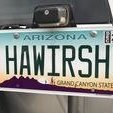Leaderboard
Popular Content
Showing content with the highest reputation on 02/07/2023 in all areas
-
Side gear: The outer teeth are what engage the locking ring. The inner teeth engage the spider gears. If your application uses a thrust block (R50s don't), it gets inserted inside: Alright, so fast forward...getting it into the 3rd member housing is no different than any other LSD/locker install. Only notable for this that the RH bearing cap just needs a little filing or grinding to take off any high points for the bracket that holds the electromagnet stationary. The bracket is compact enough that grinding might not be necessary, but it's easy to do. (My TJM bracket is larger and definitely required grinding the bearing cap.) You can see how it has a slot for the peg on the electromagnet to keep it from spinning. The cable is a little too close to the bracket in my opinion, but once it's routed through the bulkhead, it's not in contact with it. Didn't get any close-up pics of the bulkhead fitting, but it's nothing special. Drill a 10.5mm hole, tap to M12x1.25. The cable comes without the harness installed for routing, and the bulkhead has an or-ring and fluid-tight compression jacket. Once routed, you just slip the pins into the connector. Pin order doesn't matter. All done!2 points
-
Installed a TRE eLocker over the weekend for a buddy's Frontier. Installed no differently than an air locker, and unit seems decently built. Let's get started... TRE has 3 locker styles available; 2 air, 1 electric. This unit is the 31-spline TE136 eLocker (33-spline is TE135). As such, no air lines or accessories are needed for operation. Major selling point is that these lockers run close to $700-$750 USD, which is a steal. Even the air lockers (there's a ARB-clone TR136/TR135 and a "crab" locker TC136/TC135) are in the same price range, and they even include an air compressor I believe (another ARB-clone). They even have front R200A air (TR202) and eLocker (TE202) options. Considering ARBs are now near $1200, TJMs are basically NLA, Harrop doesn't want to sell lockers, Blokkas are practically unobtainable due to a bull$hit war, and no one seems to trust Lokka any more...well, this is a pretty clear-cut winner for the price and availability. I'm not a spokesperson for these guys, but this is a great entry point for lockers. The kit includes full wiring loom, switches, locker unit, bearings, thrust block, stationary bracket, bulkhead fitting, and other accessories. The pic below is incomplete because my buddy just dropped off the locker essentials for me to install into a 3rd member, but kept the wiring to pre-install that into the truck. Initial impressions were good. The interior packaging could have used some improvement, as some pieces of thin MDF chipped off and put crud all over the unit. The bag was a little shredded, but not terrible. The unit itself looked pretty good overall. There was a scratch and some flap-disc cleanup in one particular area. Operating function is pretty simple. There's an electromagnet on the end that remains stationary to the 3rd member housing while the differential is spinning. When the magnet is off, two "ramping" collars mate together, like so: When the electromagnet is energized, the ramping collar closest the magnet sticks to it, while the other collar (fixed to the differential housing) ramps away from it: When it lower collar ramps away, it pushes 4 pins outward, which engage a gear onto one of the side gears (shown later), which locks it to the differential housing and creates the locking action. Two notable things here that differentiate this eLocker from an air locker are: Even though the electromagnet is energized, the collar that sticks to it will eventually still rotate, but it remains locked. The magnet itself does not lock anything to it, but does create enough addition friction to hold the collar to some degree. This does also mean that there's additional friction when the carrier is rotating, unlike an air locker which does not introduce any new friction. The ramping design means that it will lock in forward or reverse, but that it will unlock if transitioning between. That is, the locker will lock-unlock-lock if the truck rolls a little, whereas an air locker remains locked 100%. Now, in my Harrop post it was discussed this operation could be problematic if gassing it from a rollback, but seeing this design I'm much less concerned. I believe it was the "pin type" lockers that would be more problematic than this "collar type" locker. Carrying on... The overall machining quality seems fine. Cover off, some oil and packing material crud inside. Return spring: In the unlocked position, this ring gear is recessed into the housing, allowing the side gear to spin freely like an open diff: When engaged, the ring gear is pushed outward to lock the side gear to the housing: Here's a pin head engaged out a little: The pins just slip into place, visible from the outside of the carrier:1 point
-
1 point

